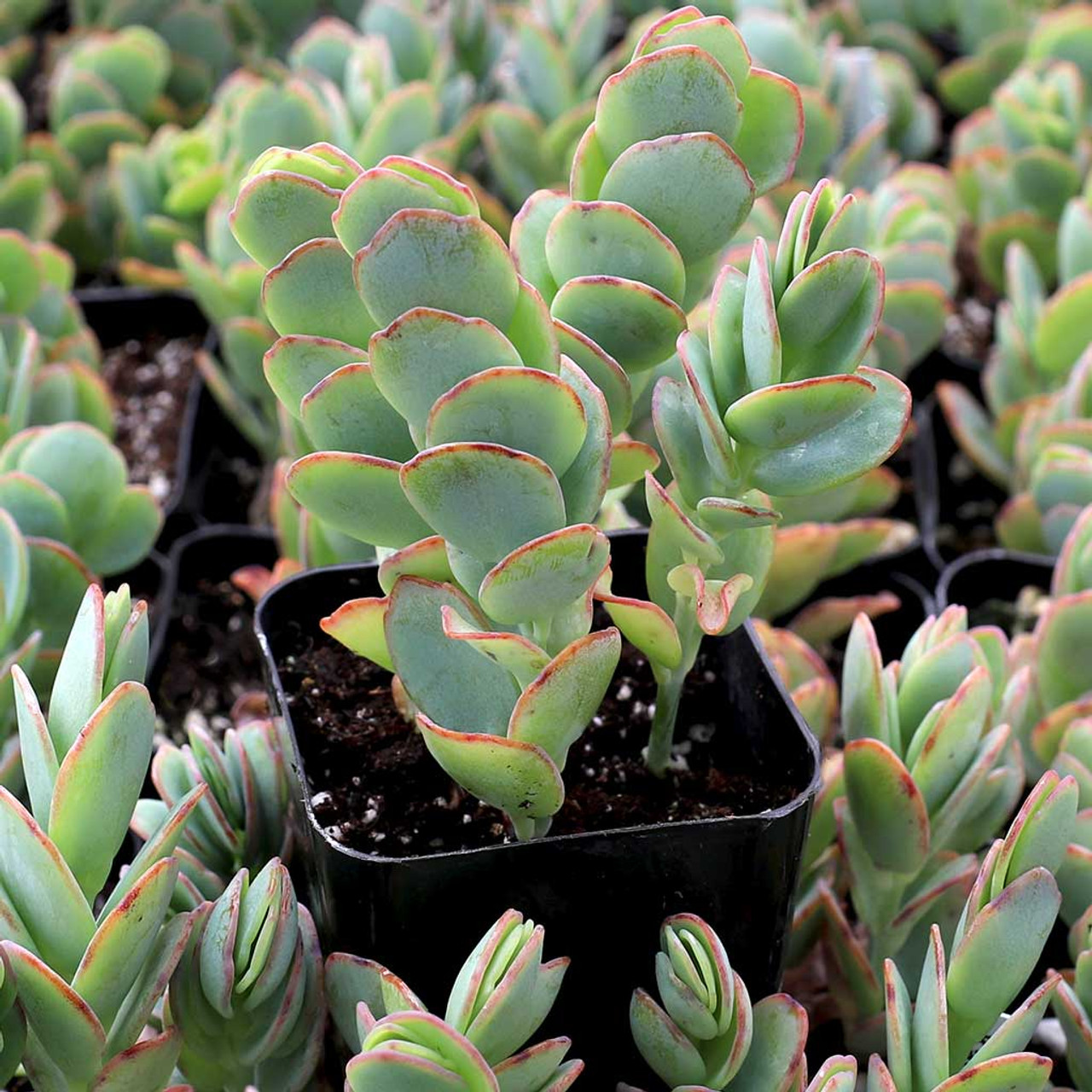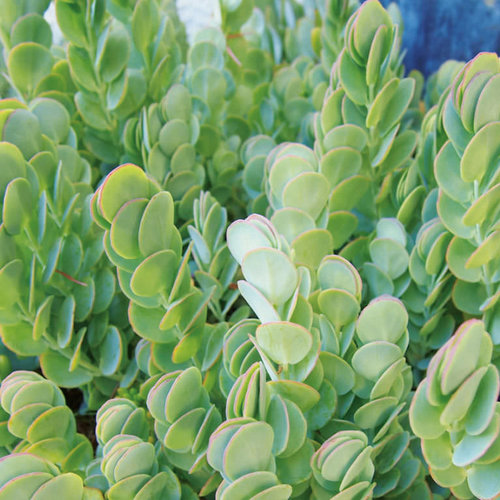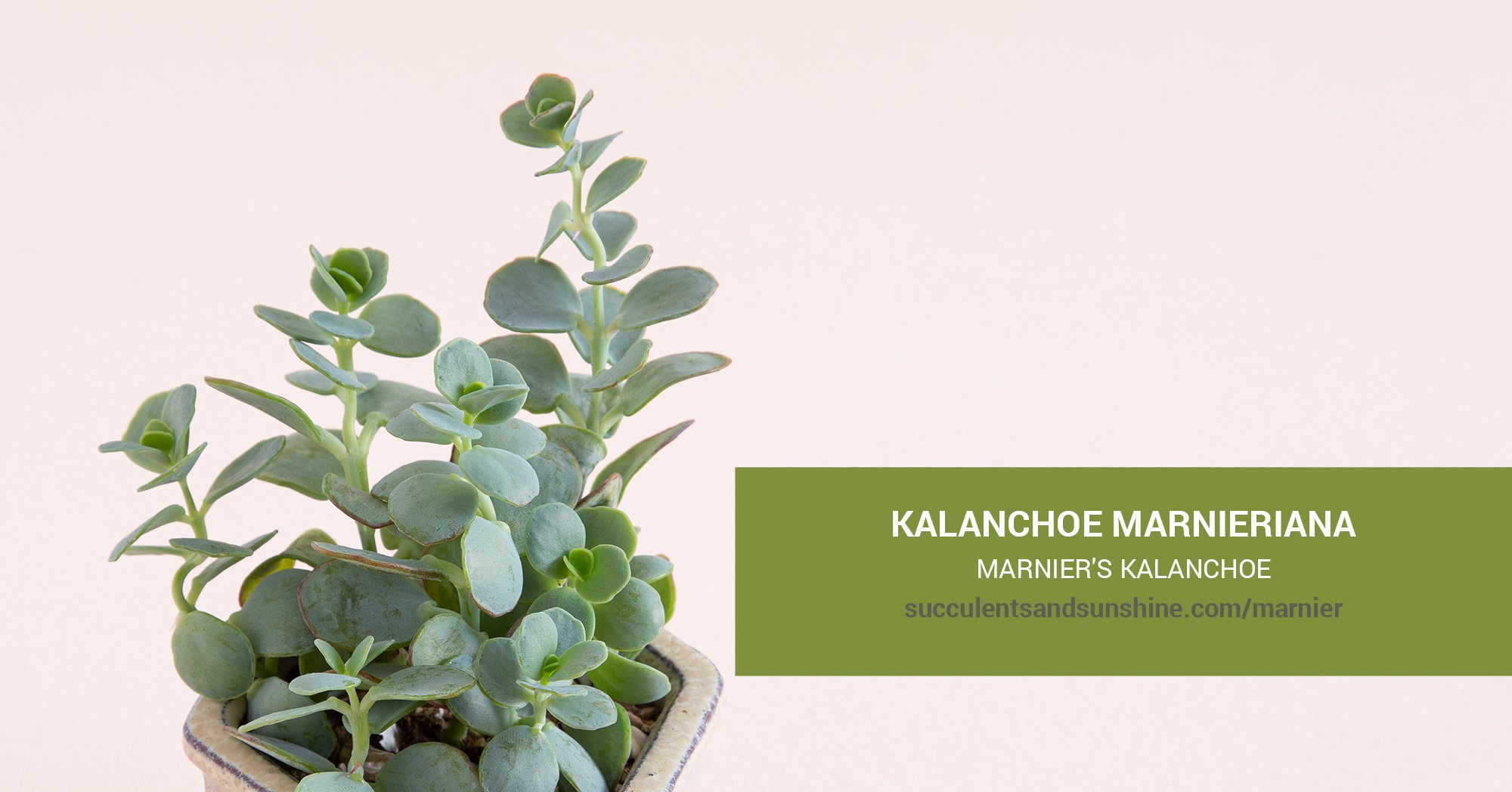This blue-green succulent has thin, round leaves that sprout up along a vertical stem. Growing up the stem in an alternating pattern, the leaves face the stem as they reach further up. When exposed to the right amount of stress, the edges of the leaves can turn a reddish-pink. “Marnier’s Kalanchoe” makes a wonderful addition to any potted garden, adding a unique height and texture.
Table of Contents
Care and Propagation Information
Kalanchoe marnieriana, also known as “Marnier’s Kalanchoe,” has bright red, bell-shaped flowers that appear in the winter months. If planted outdoors, slugs and snails may be attracted to the foliage. To protect the leaves from being damaged, it is recommended to use crushed eggshells or diatomaceous earth around the base of the plant.
Watering
The most suitable way to water Kalanchoe marnieriana (“Marnier’s Kalanchoe”) is to use the “soak and dry” method, where the soil is allowed to dry out completely before the next watering. This is the typical watering requirement for a succulent.
Where to Plant
If you live in an area with temperatures that drop below 20° F (-6.7° C), it’s best to keep Marnier’s Kalanchoe in a pot that can be brought indoors. It does well in both sunny or partially shaded areas and can also be grown inside.
How to Propagate Kalanchoe marnieriana “Marnier’s Kalanchoe”
It is possible to grow new Kalanchoe marnieriana plants from stem cuttings.
Cuttings
To propagate “Marnier’s Kalanchoe” from cuttings, obtain a clean and sharp knife or scissors. Cut off a stem from the main plant and let the cut end heal for several days before planting it in soil with good drainage. Make sure to water the soil only when it has completely dried out.
Care and Propagation Information
General Care for Kalanchoe marnieriana “Marnier’s Kalanchoe”
Watering
The most suitable way to water Kalanchoe marnieriana (“Marnier’s Kalanchoe”) is to use the “soak and dry” method, where the soil is allowed to dry out completely before the next watering. This is the typical watering requirement for a succulent.
Where to Plant
If you live in an area with temperatures that drop below 20° F (-6.7° C), it’s best to keep Marnier’s Kalanchoe in a pot that can be brought indoors. It does well in both sunny or partially shaded areas and can also be grown inside.
How to Propagate Kalanchoe marnieriana “Marnier’s Kalanchoe”
It is possible to grow new Kalanchoe marnieriana plants from stem cuttings.
Cuttings
To propagate “Marnier’s Kalanchoe” from cuttings, obtain a clean and sharp knife or scissors. Cut off a stem from the main plant and let the cut end heal for several days before planting it in soil with good drainage. Make sure to water the soil only when it has completely dried out.
FAQ
Should a kalanchoe be inside or outside?
Kalanchoes can thrive in warm climates (zones 10-12) when planted outdoors. In cooler regions, it’s advisable to keep them as indoor plants or grow them in pots that can be taken inside during the winter.
Does Kalanchoe come back every year?
Kalanchoes are perennial plants in zones 8-10, meaning they will come back every year in the right climate. However, they may not survive if they are exposed to temperatures below 40°F for an extended period of time. Nonetheless, the flowers can still be enjoyed year after year on houseplants.
Does Kalanchoe like full sun or shade?
In direct sunlight
How do you care for a kalanchoe Marnieriana plant?
This plant is quite hardy and can be grown in a variety of soil types, provided they are well-drained. It can tolerate both high and low amounts of light, requiring minimal watering to survive and stay healthy. Unfortunately, slugs and snails can damage the leaves, so it is best to keep an eye out for these pests.
Is Kalanchoe Marnieriana indoor or outdoor plant?
Kalanchoe marnieriana is a relatively low maintenance plant that can be grown in both indoor and outdoor environments. However, if you live in a colder climate, it is best to keep them indoors since the plant is highly susceptible to freezing temperatures and may not survive if the temperature drops too low.



